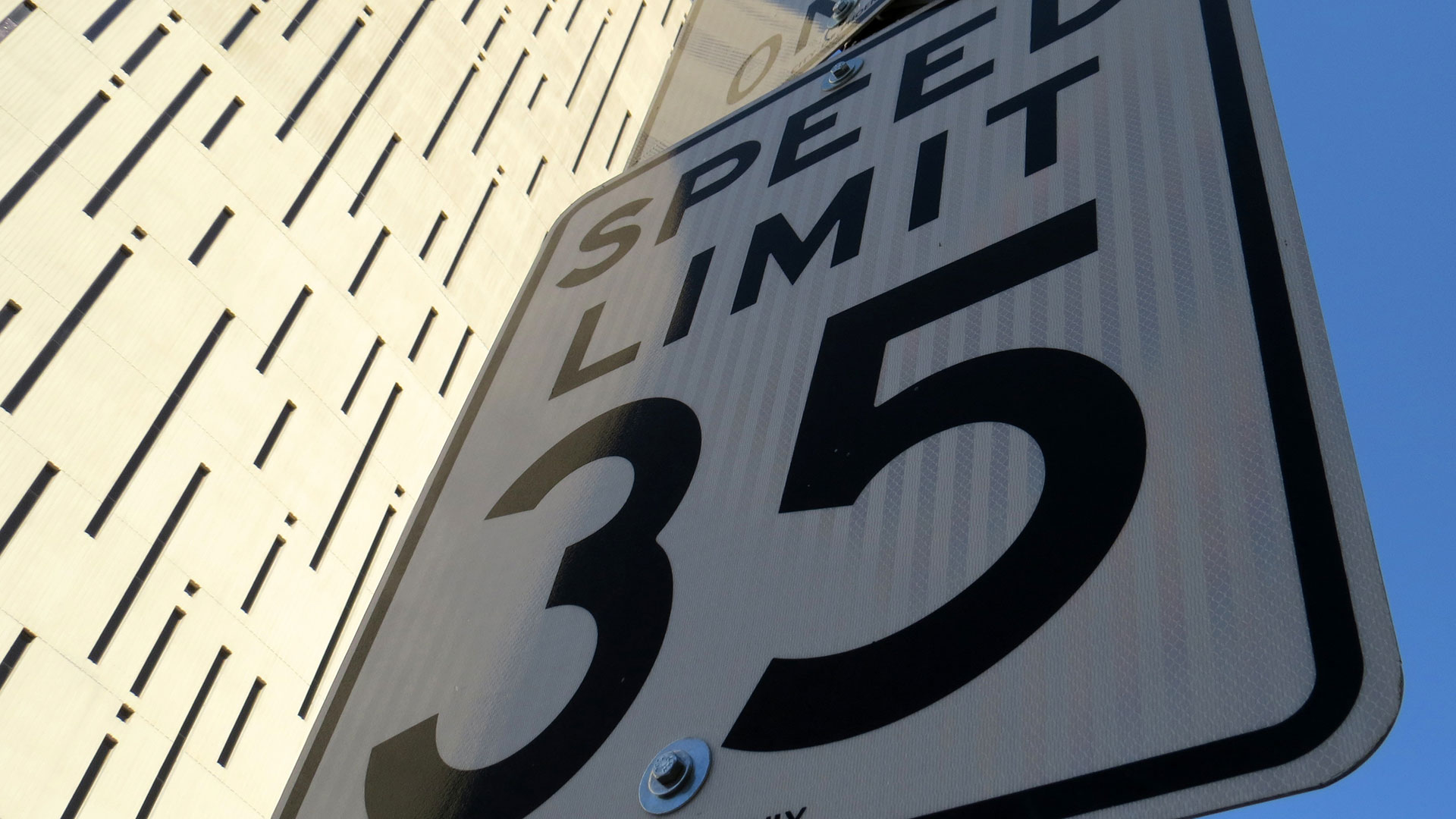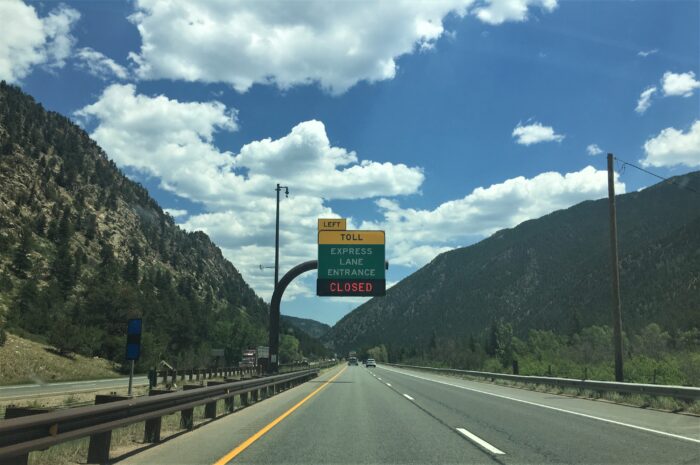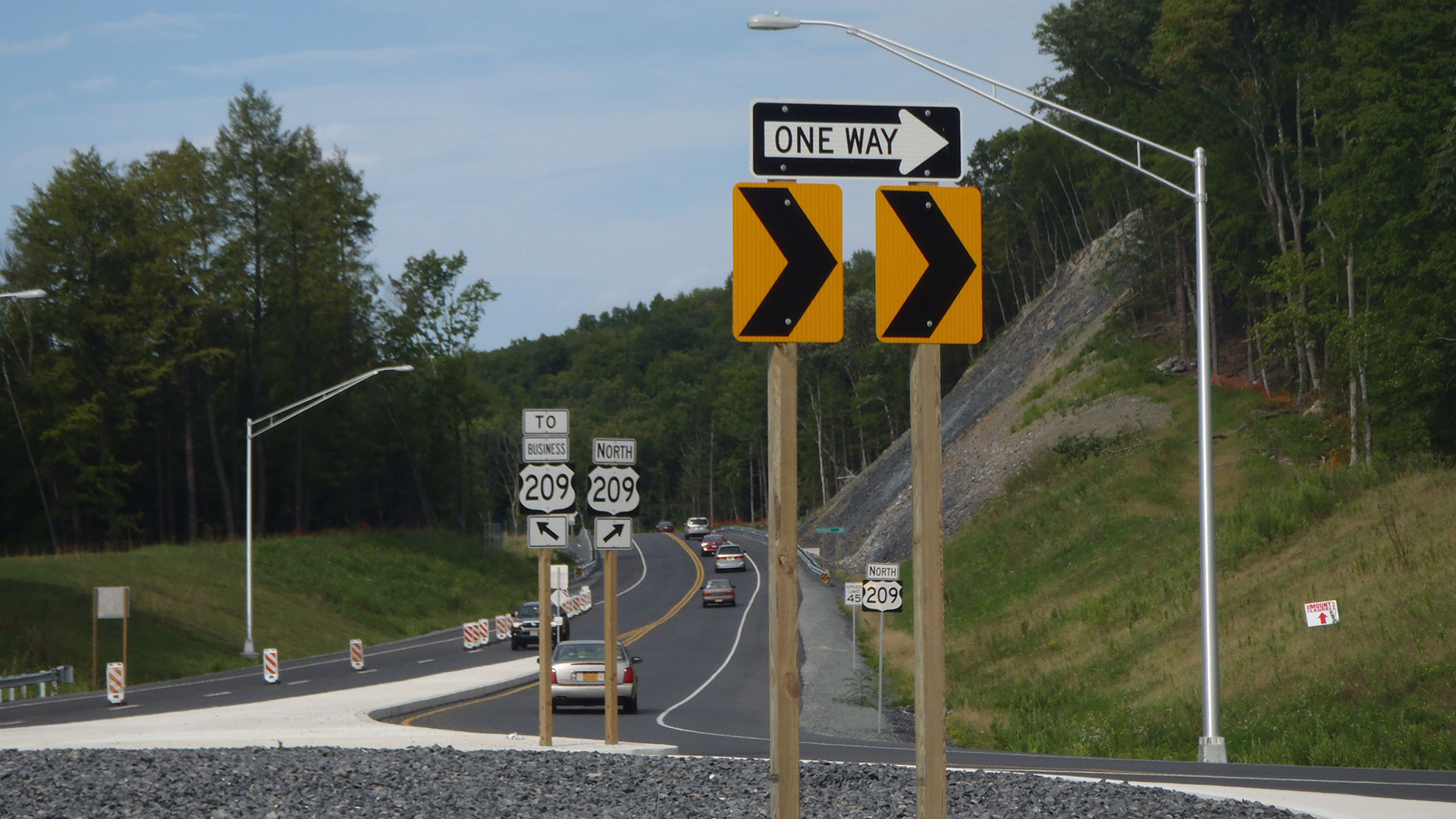The 11th Edition of the Manual on Uniform Traffic Control Devices (MUTCD) was published in December 2023, about a month after the 88th birthday of the very first edition. While most transportation professionals have at least a general idea of the MUTCD’s purpose and use, the publication of a new edition comes with a number of important questions. Why was the MUTCD revised? What does this mean for regulations in my state? Where can I learn what’s different in this edition compared to the 10th edition? Read on to find out!
The MUTCD is established by federal regulation as the national standard for all traffic control devices installed on any street, highway, or bicycle trail open to public travel. The content in the MUTCD defines criteria for the meaning, design, selection, placement, operation, maintenance, and/or removal of traffic control devices.
The basic purpose of the MUTCD is to “establish uniform national criteria for the use of traffic control devices that meet the needs and expectancy of road users.” This purpose is achieved by providing basic principles for traffic engineers to use in making decisions regarding traffic control devices.

The MUTCD Matters!
One day in the late 1980s, I was rummaging through my parents’ garage and came across a 1948 MUTCD that my father used when he was a student at the Yale Bureau of Highway Traffic in the mid-1950s. While perusing that document, I found that stop signs were yellow, highway centerlines could be white, and green guide signs did not exist. It was an eye-opening experience that led me to begin collecting old traffic engineering books.
Since then, I have spent the majority of my 40+ year career focusing on traffic control devices and the role they play in the safety and efficiency of our roadway network. While it may be easy to dismiss traffic control devices as those “things you add at the end of a design project,” the reality is that proper use of traffic control devices is a critical component of our system working in harmony with roadway design and driver behavior. The MUTCD is the window through which we view traffic control device design and use.

The MUTCD brings uniformity in the meaning and appearance of traffic control devices, and consistency in their use, installation, and operation.
From 166 Pages to 1,156 and Counting
The MUTCD has a long history, with the first edition being published in 1935. Over the course of eleven editions, its scope has expanded from 166 pages in the first edition to 1,156 in the current edition. (If you’d like to access historical editions of the MUTCD, you can find them at mutcd.kittelson.com, a one-stop location for accessing previous editions of each edition of the MUTCD, all of the revisions associated with individual editions, and related Federal Register notices for the more recent editions. This site is also a great place to go to learn more about how the MUTCD has evolved over time and to look at scans of individual editions.)
The Federal Highway Administration (FHWA) assumed ownership of the MUTCD after publication of the 1971 edition, when it became a federal regulation. Prior to that, a committee of representatives from professional organizations was responsible for developing and updating that content. Today, the descendent of that organization is the National Committee on Uniform Traffic Control Devices (NCUTCD) and I am proud to serve as Chair of the NCUTCD.
On December 19, 2023, FHWA published the final rule for the new MUTCD in the Federal Register. This new MUTCD, referred to as the 11th edition of the MUTCD or the 2023 MUTCD, is the first major update of the MUTCD in 14 years. While much of the content in the new MUTCD remains essentially the same, there are also numerous changes and new additions.
Which MUTCD Is My State Using?
Using the MUTCD is not always as easy as it may seem. One of the biggest questions that arise when a new MUTCD is published is whether to use the new or old MUTCD. While the national MUTCD became effective on January 18, 2024 at the national level, federal regulation provides states with a two-year window to adopt the MUTCD or a revision.
Individual states have three different options for adopting the MUTCD. As an example, let’s consider how states adopted the 2009 MUTCD. Eighteen states adopted the 2009 MUTCD for use in their state. Most of those required some form of administrative or legislative process for the new MUTCD to become effective in that state. Another 22 states adopted the national MUTCD along with a state supplement, while 10 states adopted a state MUTCD based on the national MUTCD.
The number of states that fall within any one of these adoption methods may change as states evaluate the 2023 MUTCD. Most of the states that have a state supplement or state MUTCD will need the full two-year window to adopt the new manual. Those that adopt the new MUTCD may do so sooner or later depending upon the individual state process. So MUTCD users should touch base with their state DOT to determine when the 11th edition of the MUTCD is expected to be applicable in that state and what form it will be taking.

Individual states have three different options for adopting the MUTCD. Looking back on the 2009 MUTCD, 18 states adopted the national MUTCD for use in their state, 22 states adopted the national MUTCD along with a state supplement, and 10 states adopted a state MUTCD based on the national MUTCD.
The biggest challenge of MUTCD adoption involves design plans currently in the development stage that will not be constructed until after the new manual is adopted in a state, especially if there is a difference in how the current and new MUTCDs address a specific device. In those cases, the designer should coordinate with the responsible agency to identify the preferred course of action.
So, What’s New in the New MUTCD?
Another challenge with implementing of a new edition of the MUTCD is identifying what’s changed from the prior edition. There are several tools that are currently available (and more that will be available in the near future) to piece together an answer to this question. The FHWA MUTCD website has a variety of resources, many of which have been consolidated on the current MUTCD page on the Kittelson MUTCD website:
- The December 19, 2023 Federal Register final rule notice, which provided a high-level summary of the most significant issues identified in the docket comments.
- The December 14, 2020 Federal Register notice of proposed amendments, which listed 647 significant changes that were proposed in the draft 11th edition of the MUTCD.
- The summary of dispositions document, which provides a summary of action for each of those 647 proposed changes.
- The 2009 MUTCD redline document, which shows additions and deletions in the new MUTCD using the 2009 edition as a base for the comparisons.
- A list of known errors in the 2023 MUTCD, which FHWA published in early March 2024. These 42 bullet points identify places in the MUTCD where FHWA has identified an error in MUTCD content that they intend to correct in a future rulemaking effort.
It’s a lot of content to sift through, but being a truly effective user of the MUTCD means understanding how and why MUTCD content has changed. The Federal Register final rule notice is particularly important in providing background information that is not part of actual MUTCD content. The list of known errors is also important, because as a federal regulation, FHWA cannot correct these errors without going through the rulemaking process.
How is the MUTCD Revised?
The typical process for updating the MUTCD is for FHWA to publish a Notice of Proposed Amendments in the Federal Register and invite the public to comment on the changes. They will review the comments and then publish a final rule in the Federal Register, which establishes an update to or a new version of the MUTCD.
In part because of the lack of regular updates to the 2009 MUTCD, Congress instructed the Secretary of Transportation in the Infrastructure Investment and Jobs Act to update the MUTCD no less frequently than every four years. Such an update could be a revision of the current edition or an entirely new edition. In addition to correcting the known errors in an upcoming revision, FHWA has stated that they intend to revise the 2023 MUTCD to incorporate MUTCD elements of the recent Public Rights of Way Accessibility Guidelines (PROWAG) final rule.
On occasion, FHWA issues official interpretations related to MUTCD content. These interpretations often provide “between the lines” insights into MUTCD content and can be helpful in determining the intentions of specific content. FHWA also issues Interim Approvals, which are a means of providing provisional or interim use of an experimental traffic control device.
How to Access the New MUTCD
The official version of the 11th edition of the MUTCD is the PDF version available on the FHWA website. Printed copies are currently available online but be aware that these documents are being printed from the PDF version. In the near future, AASHTO, ITE, and ATSSA will cooperatively produce a printed copy created from the source artwork. These organizations are likely to take pre-orders for the printed version in April. If you are going to buy a printed copy, this is what I would recommend.
Continue the Conversation
Keep an eye out for future articles from Kittelson, and Kittelson LLC where we’ll drill down into specific content changes in the 2023 MUTCD compared to the 2009 edition, and how the new criteria will affect your projects. In addition, if you’d like to talk further about any of the ideas here, don’t hesitate to reach out!

